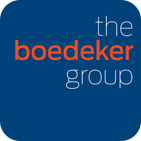
In higher education, decisions often hinge on numbers: adoption rates, revenue, conversion metrics. These are useful, but they rarely tell the full story. The earliest indicators of a coming shift in user behavior or market demand aren’t loud metrics—they’re quiet clues. Things like improvised workarounds, unexpected drop-off in feature usage, or friction that users don’t directly report.
Spotting subtle signals early, like makeshift workflows or underused features, can help you catch product-market misalignment before it becomes costly. In this blog, we’ll break down what to listen for and why it matters—so you can guide smarter roadmap decisions and respond to real needs instead of assumed ones. For EdTech portfolio managers juggling multiple priorities, these cues offer a proactive way to avoid missteps and stay aligned with evolving user needs.
Workarounds Are Warnings—and Opportunities
When users turn to spreadsheets, Slack hacks, or external tools just to complete a core task, it means they’re working around your product—not with it. That’s a deeper signal that your product may not fully align with what users actually need.
At The Boedeker Group, we always ask this: “What else are you using to get the job done?”
If users are relying on outside tools to supplement your product, there’s opportunity there.
Workarounds illuminate where the product ends and the real job continues. Treated correctly, they’re not just flags—they’re roadmaps for future development.
Related Research: A study in the International Journal of Educational Management explored how faculty and staff in higher education use workarounds to address system limitations. The research found that these workaround behaviors—like creating parallel systems or using shadow tools—were not just signs of dissatisfaction, but insights into how technology needed to evolve to better serve real-world academic needs.
Familiar Friction Is a Cue for Change
Comments like “It works, but it takes longer now” or “We mostly use it for X” are subtle signs that user needs may be outpacing what your product currently delivers. These types of comments—often shared in qualitative interviews rather than surveys—suggest that workflows are becoming more strained, users are adapting the product to fit changing demands, or core functionality is no longer sufficient for their day-to-day realities.
As workflows grow more complex or institutions scale, what once felt seamless begins to strain. Look for repeated mentions of time-consuming processes, missed steps, or reliance on templates that weren’t needed before.
Underused Features Tell a Story
You may track feature adoption, but do you ask why users ignore certain functions? Partial adoption often reveals where your product is misaligned with user needs. Is the feature truly irrelevant—or just misunderstood? Has it been poorly positioned or replaced by something simpler?
Ignoring this gap risks more than just underuse; it can signal eroding value perception. Digging into what’s being skipped gives you a clearer view of where to focus refinement—and where you may be losing users silently.
Cross-Role Patterns Are Rare and Valuable
When admins, faculty, and students express different concerns that point to the same issue, pay attention. That pattern likely highlights a structural gap in your product or experience.
In EdTech, where decision-making involves a web of stakeholders, recognizing these intersections early can help you improve positioning, onboarding, and product design.
We start by mapping out who is involved in the decision—not just the end user. In EdTech, this often includes gatekeepers like department chairs, champions like tech-forward faculty, skeptics who resist change, and influencers in IT or administration. Each plays a unique role in shaping adoption, and understanding their dynamics is key to building the right product, messaging, and onboarding strategy.
External Pressures Are Internal Risks
Sometimes, it’s not your product that causes churn. It’s budget cuts, policy shifts, or internal politics. But if you don’t account for these, you might draw the wrong conclusion and pivot when you don’t need to.
Great research doesn’t just look inward. It looks around.
This is where understanding the full ecosystem your product lives in—its stack, processes, and rhythms—can make the difference between being seen as a nice-to-have or a must-have.
How to Listen for What’s Next
The goal of research isn’t just validation—it’s foresight. That requires:
- Asking scenario-based questions like: “What would make this stop working in six months?”
- Mapping the ecosystem: What other tools or roles impact use?
- Zooming out: Are external constraints shaping decisions?
You don’t need 1,000 survey responses. In many cases, ten well-structured conversations reveal more actionable insight than a dashboard ever could.
“Sometimes the biggest missed opportunities aren’t what you did—they’re what you didn’t make time to understand. That’s why we ask future-facing questions that help teams pull out of short-term mode.
Turning Signals Into Strategy: How The Boedeker Group Helps
We specialize in higher education market research that captures not just what your users are doing—but why. We help EdTech leaders listen differently, spot weak signals early, and adapt their strategy before the market moves.
When you’re under pressure to deliver results across multiple products, research that cuts through the noise is your competitive edge.
Let’s uncover what your market isn’t saying—yet. Reach out.

